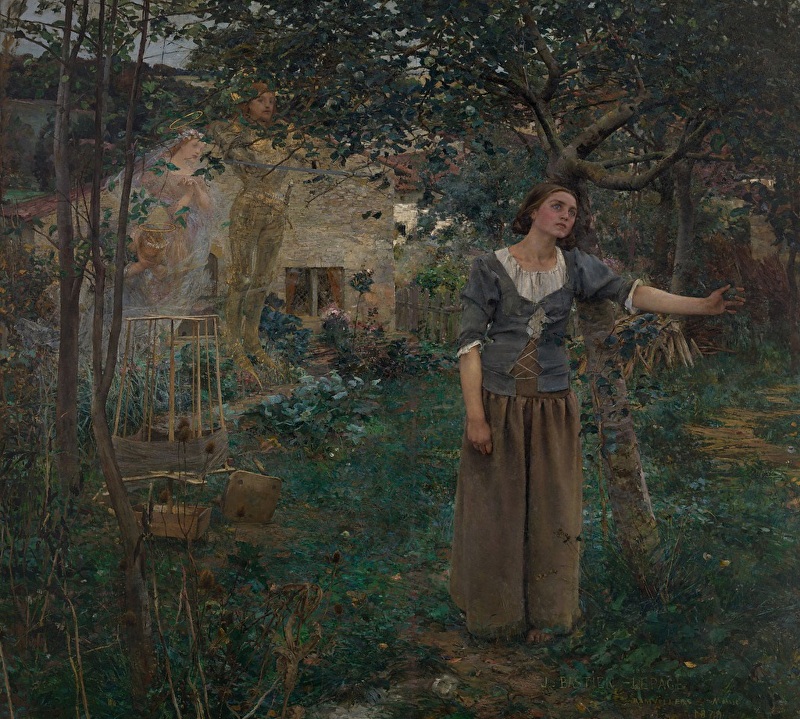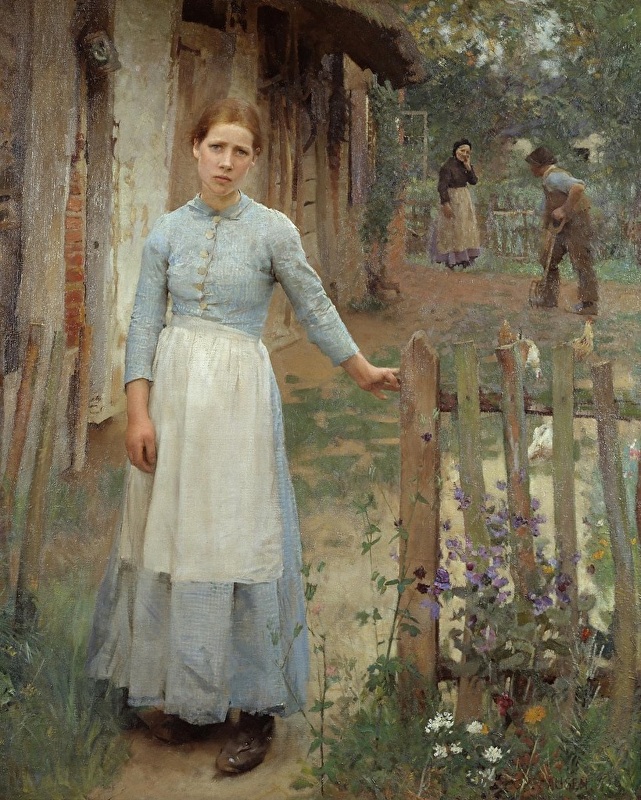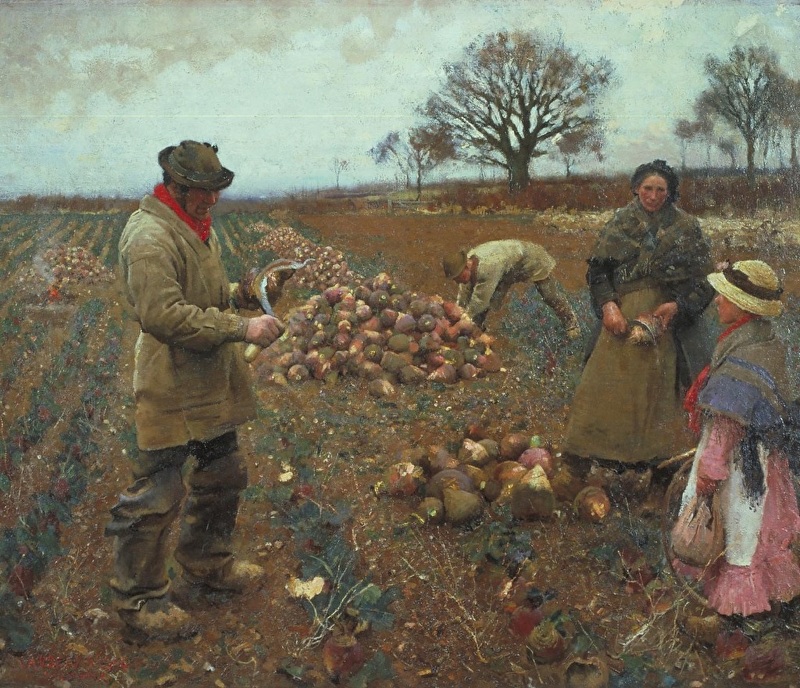Sir George Clausen (1852-1944) was just a bit younger than Bastien-Lepage (1848-1884), but Lepage died at the age of only thirty-six, so his career was greatly abbreviated. Sir George Clausen enjoyed a much longer career and like many of the realists of his age was strongly impacted by Lepage's unique vision of realism, so that in some ways he carried Bastien-Lepage's legacy into the future. In this excerpt ofClausen's essay, written in 1892 in the midst of Clausen's working career, he comments on one of Bastien-Lepage's most famous paintings, Joan of Arc, now in the Metropolitan Museum of New York. The painting provoked controversy from the time it was first exhibited in 1879, and Clausen takes on the debate:
"In spite of the wide range of his (Bastien-Lepage's) work and the extraordinary versatility of his execution, he kept, as a rule, within certain limitations of treatment. He did not care for the strong opposition of light and shadow, and he seems almost to have avoided those aspects of nature which depend for their beauty on the changes and contrasts of atmosphere and light. All that side of nature which depends on memory for its realization was left almost untouched by him, and yet it is idle to suppose that so richly gifted a man could not have been keenly sensible to all nature's beauty; but I think he found himself hedged in by the conditions necessary to the realization of the qualities he sought. For in painting a large figure-picture in the open air, the painter must almost of necessity limit himself to the effect of grey open daylight. This he realized splendidly; at the same time it may be said that he sought elaboration of detail perhaps at the expense of effect, approaching nature at times too much from the point of view of still-life. This is not felt in his small pictures, in which the point of view is so close that the detail and general effect can be seen at the same time; but in his large works much that is charming in the highest degree when examined in detail, fails to carry its full value to the eye at a distance necessary to take in the whole work. This was the case with "Joan of Arc" in the Paris Exhibition of two years ago; and it was instructive to compare this picture with Courbet's "Stone-Breakers," which hung near it on the same wall. Courbet had generalized as much as possible--everything was cleared away but the essentials; and at a little distance Courbet showed in full power and completeness, while the delicate and beautiful work in "Joan of Arc" was lost, and the picture flat and unintelligible in comparison."




